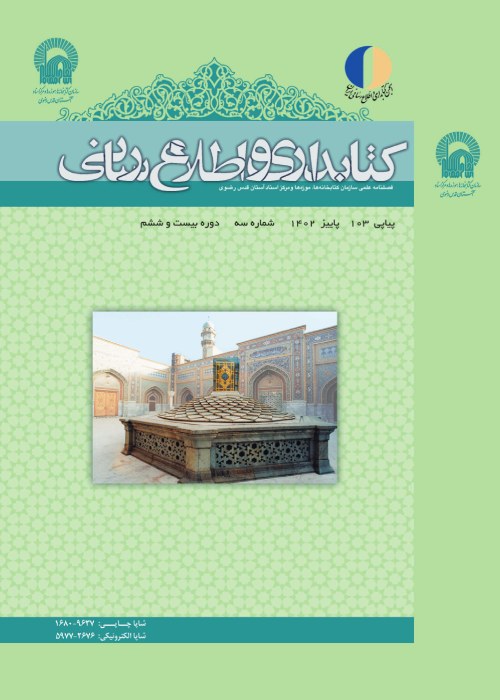Comparative Study of Science Classification Systems and Library Bibliographic Classification Schedules
The science classification and library bibliographic classification are the two well-known study fields, the first, subject to science field and the second subject to Library and Information Science field. These two concepts are very close to each other. Regardless of the connection between these two, there exist fundamental questions, to name one: what is the need for compilation of science classification systems or library bibliographic classification schedules? There are many studies on these tow schemes, which can be divided into the following four categories: 1) Discussing the general issues (like definition, necessity and challenges), 2) describing one or more classification systems, 3) analyzing the perspectives of Islam and Muslims, and 4) specifying the components of science classification or library-bibliographic classification as to interdisciplinary fields and the theories thereof. In none of the existing works, a combination of these two… is studied in a comprehensive and detailed sense. Accordingly, this study aims at running a comparative study of science classification systems and library bibliographic classification schedules in the context of the time trends, thematic tendencies of the designers, the approaches and classification criteria, the count of branches and their efficiency and influence thereof.
The two documentary and content analysis methods are adopted here. In the documentary analysis section, a collection of relevant documents is identified through a targeted sampling method. In the content analysis, quantitative and qualitative methods are applied. According to the purpose and type of research, the census method is applied.
The review run on the texts led to the identification of 99 science classification systems and 57 library bibliographic classification schedules. The climax of the science classification systems formation is toured in the Middle Ages with a frequency of 45 (46.39%) and the library bibliographic classification schedules climax is toured in the contemporary age with a frequency of 29 (51.78%). In terms of expertise and subject area, 54 percent of science classification systems are developed by philosophers and 42 percent of library bibliographic classification schedules are developed by librarians. In terms of classification systems criteria, the "religious-orientation" with frequency of 11 classifications for the science classification systems and the "subject- orientation" with frequency of 9 classification for library-bibliographic classification schedules top other criteria. The count of developers of science classification system are influenced by Farabi, an Iranian philosopher, is 14. The count of the same influenced by Aristotle, a Greek philosopher, is seven. As to library bibliographic classification schedules, the most influential person is Francis Bacon. In the science classification systems, 35.38 percent (23 cases), are divided into two categories, while in the library bibliographic classification schedules, most of the sub-categories are quartet and decimalized (each are with 13.63 percent (6 classifications).
Comparing these two classification systems according to these criteria provides an appropriate perspective of these systems from the beginning to the present. Therefore, the results of this research can be applied to the country's scientific policies in the field of science classification systems and library bibliographic classification schedules. Regardless of the relation between these two systems, there are fundamental questions about these two domains. Among them, one can point to the question of whether the necessity of codification of classification systems of science or library bibliographic classification schemes is right?
- حق عضویت دریافتی صرف حمایت از نشریات عضو و نگهداری، تکمیل و توسعه مگیران میشود.
- پرداخت حق اشتراک و دانلود مقالات اجازه بازنشر آن در سایر رسانههای چاپی و دیجیتال را به کاربر نمیدهد.




